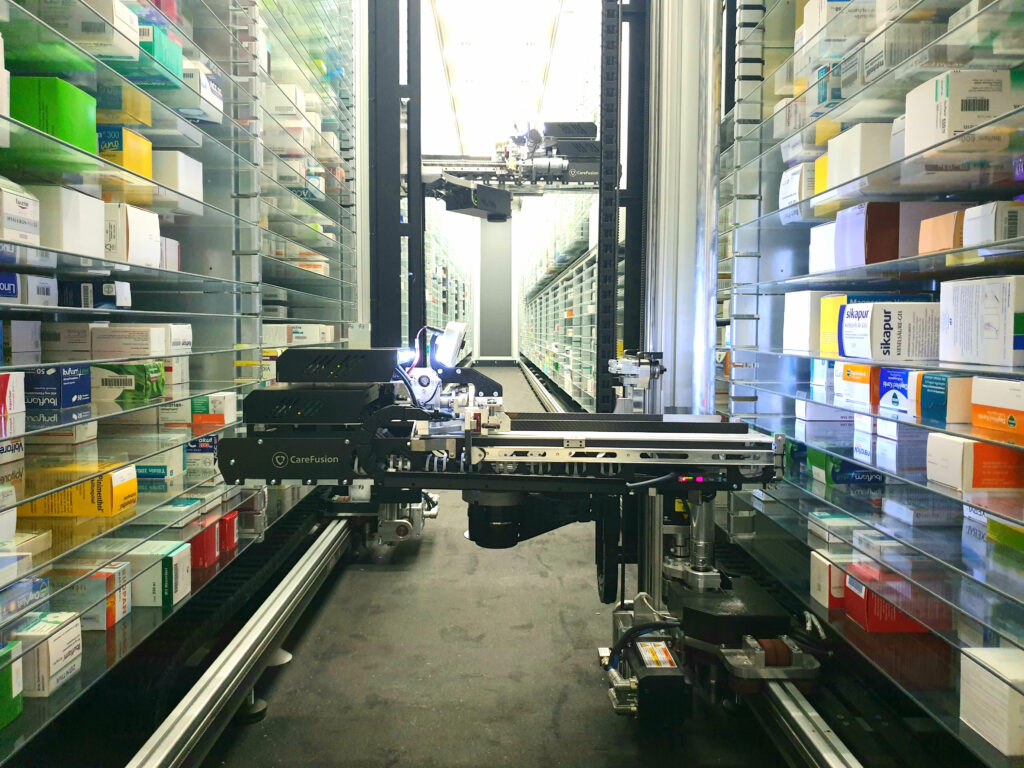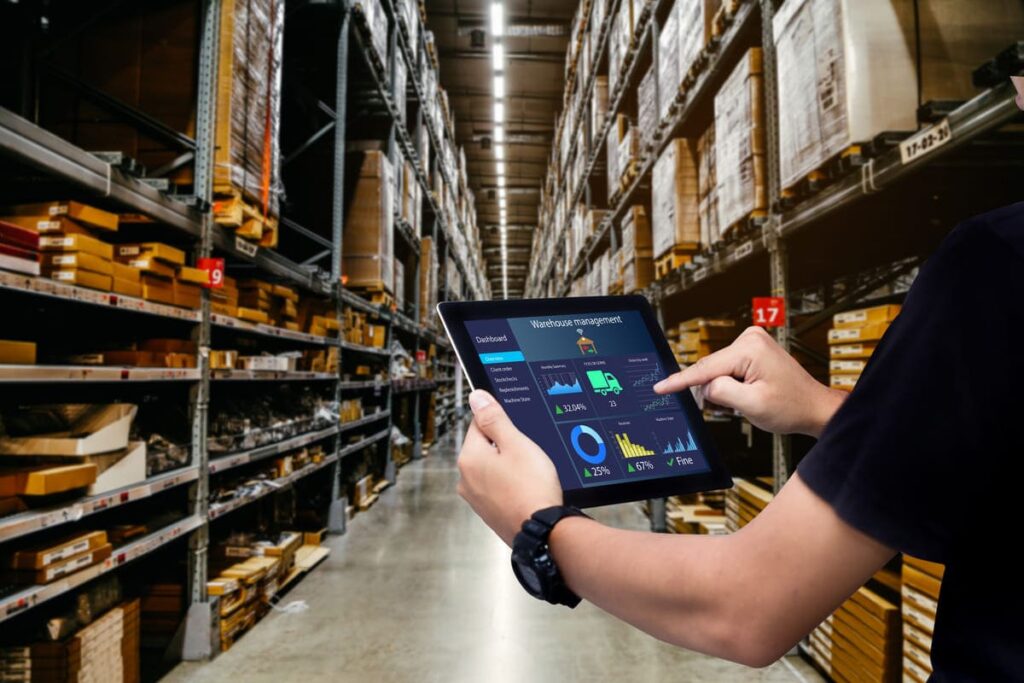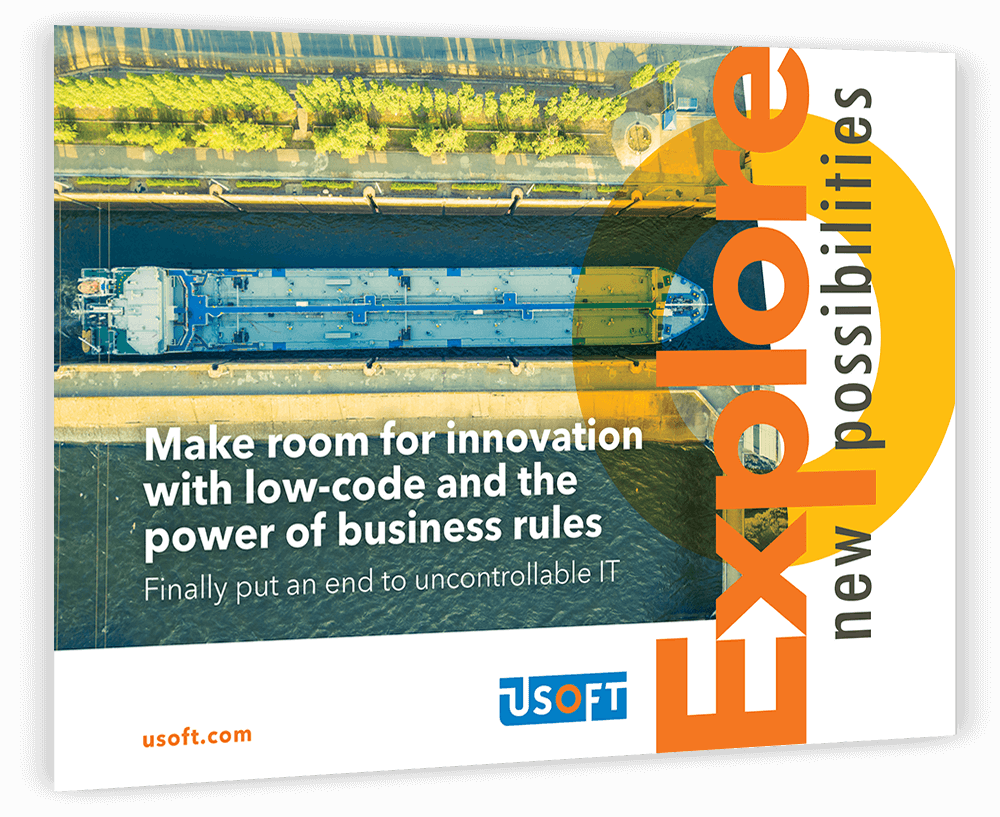When your current logistics software can’t keep up with your growing requirements, it’s time to look at the alternatives.
By leveraging the efficiency of low-code software development, organizations can rapidly build the technological capabilities they need. No longer encumbered by inflexible legacy systems, logistics organizations can step confidently into the future, knowing they can utilize the most advanced technological solutions to become more efficient, effective, and resilient.
A full range of applications – from small additions to full custom ERPs
One of the greatest advantages of low-code is that it can enable incremental legacy modernization; delivering the maximum benefit with minimum disruption. Developers can start with small, custom add-ons that give just the right functionality and features you need, and eventually move towards a full modernization of your trusted legacy architecture. Advanced low-code platforms like USoft can, for example, enable developers to add sophisticated Intelligent Process Orchestration capabilities to their trusted systems or use low-code to build an entire custom ERP from scratch.
How low-code can give your legacy software a new lease of life
Legacy systems continue to persist for a good reason: they’re relied on, like the foundations of a building.
Simply replacing these systems is not feasible because the entire business is built on top of them. The disruption that comes from training your staff to use a whole new system, working out all the bugs, and creating the needed workarounds and customizations to make it work for your organization is not something a logistics business can tolerate.
Unfortunately, those legacy systems still lack the required agility to keep pace with changes in market conditions or technologies. This inflexibility makes legacy logistics software incapable of scaling effectively to accommodate surges in demand, new access patterns, or growth across new regions.
While you might love to offer new features like a mobile app, total supply chain visibility, or new processes, it just isn’t possible with what you have right now. Or is it?
Low-code presents a new opportunity: the ability to build a modern ‘wrapper’ around your current legacy systems like WMSs or TMSs. Without creating any disruption, your legacy systems are given a way out of this ‘blind alley,’ and new capabilities can be rapidly built on top of (and parallel to) the current framework.
When the time is right (or right now), you can do a total replacement that exactly fits your current needs and has the scalability and flexibility to grow and adapt. This process can be massively accelerated by using intelligent tooling like the USoft Simplifier, which can extract the core application logic, functional blocks, business rules, data models, application flows, and user interfaces directly from your legacy code.
In less time than you might imagine, your legacy core application written in code like COBOL, RPG, Oracle, or Uniface can become a flexible, upgraded, and fully modern version – ready for whatever the future brings. It’s getting increasingly tough to find developers who can work with your legacy systems – but now you don’t have to.

New regulations? No problem
The logistics industry is at the heart of the world economy, making it a central player in combating climate change and exposing the industry to every major geopolitical shift or upheaval.
Good news: low-code development makes it possible to adopt new processes or requirements in a highly agile way. For example, emissions reporting is already required for EU aviation and maritime operators, so it’s easy to see how this might extend to road haulage in the near future. Should this occur, low-code can be used to easily incorporate these data streams into your current processes. It’s also easier to adopt new technologies like IoT or AI (and their corresponding data flows) and define how this data is handled or processed within your system.
You can also quickly adapt your own processes with new business rules and methods whenever changes to customs rules and processes come into force.
Business rules are simple logical statements that define the exact criteria and contexts for your business processes. By defining your business rules, your processes can become more agile and applied (or not applied) in new contexts more easily. An example of this might be: “Shipments to a UK destination must be accompanied by customs paperwork.” With a simple update to your rules, you can adapt to new market conditions very quickly, giving your software far greater flexibility (read more about business rules here).
Although events like ‘Brexit’ are thankfully rare, you want the ability to keep running without missing a step. Thanks to the agility and speed of low-code, your systems can comply with new demands like these and more.
Resilience in the face of uncertainty
Logistics organizations are highly interconnected and complex, and this makes them much more vulnerable to disruption when the unforeseen occurs. Partners in your chain can easily experience issues that have a knock-on effect throughout the chain – unless you have visibility over the supply chain and the power to react and adapt instantly.
By creating your own Intelligent Process Orchestration (IPO) capability, you can instantly and automatically react to any new situation. IPO uses advanced algorithms, machine learning, and predictive modeling to orchestrate key business processes in an optimal way. Similar to robotic process automation (RPA), IPO is more capable of handling complex and unexpected scenarios utilizing many data-streams, including unstructured data.
Using simple yet powerful business rules, you can automate intelligent decision-making using real-time data from your chain. Should a partner experience a shortfall of available drivers, your IPO can instantly divert certain deliveries to another partner in your ecosystem.
This capability can also generate new efficiency gains by optimizing operations, for example: using real-time traffic data and/or predictive algorithms to direct drivers towards the most optimal routes via highways, or by selecting a shipping terminal with less of a delay.
IPO in action: how Schiphol is automating intelligent decisions with USoft
Using a combination of real-time data, databases, and predictive capabilities, you can orchestrate complex, multi-stakeholder processes. A prime example of this: managing the many complex processes and activities of a modern airport.
Schiphol Airport is one of the busiest airports in the world, handling over 500.000 flights, 120 different airlines, 1.5 million tons of cargo, and 7.7 million tons of mail in 2022.
To manage this spectacular complexity, Schiphol Airport uses the USoft low-code platform to build a reliable Intelligent Process Orchestration capability that keeps everything running smoothly without human intervention.
As a result, Schiphol has become an autonomous, event-driven airport. Numerous overlapping processes, users, and assets are orchestrated harmoniously (and instantly) using continuous data flows, business rules, and automated complex data-driven decision-making.
Thanks to this solution, airplanes are always directed to the right locations, mishandled baggage is easier to track down, and optimal opening times are calculated for assets like Duty-free stores.
Implementing low-code: how it works in practice
Low-code certainly seems to promise a lot, but how does it work in practice?
The first step is getting familiar with the platform. This is an investment that takes some time at the start – perhaps a month or two – but pays off quickly as soon as developers get to grips with the intuitive interface and development process. Once this initial step is completed, developers can rapidly build and maintain apps.
From a small time investment in learning the platform, the payoff is a total cost of ownership that is +40% less expensive than alternative approaches such as high-coding or a customized commercial off-the-shelf (COTS) solution.
A solid foundation
The USoft Studio helps your developers to build the foundation of your new application, using natural language and visual modeling. Legacy applications can be analyzed automatically by the Simplifier tool, which extracts all the useful parts from the existing software. The USoft Simplifier can cover a wide variety of code bases, including COBOL, RPG, Oracle, and Uniface.
Clear business rules
The platform’s integrated rules engine ensures that your development process is based on a clear set of business rules and definitions. This enables greater agility and adaptability for your software in the long term.
Integrated development environment
Following this, the development process continues in the integrated, end-to-end development environment of the USoft low-code platform. Development, testing, and continuous delivery deployment all take place under one roof, using low-code wherever possible to shorten the path to the finish line.
Start your journey today
While legacy software still plays a crucial role in managing the complexity of logistics, it’s clear that it cannot keep up with modern demands.
The only path forward is one that allows your complex operations to continue without disruption. This might mean using low-code to develop add-on capabilities to your ERP or TMS, or rebuilding an entire custom WMS in modern code (while keeping all the familiar screens, interfaces, and processes your workers rely on).
With an advanced low-code development platform like USoft, your logistics business can start to leverage the most modern technologies, and employ efficiency-generating capabilities like Intelligent Process Orchestration in less time and at far lower cost.
By empowering your developers with a highly sophisticated toolkit, you can create software solutions that truly reflect the unique processes and value of your business, and unlock greater efficiencies across the entire chain.
Learn more about low-code for the logistics industry here.





